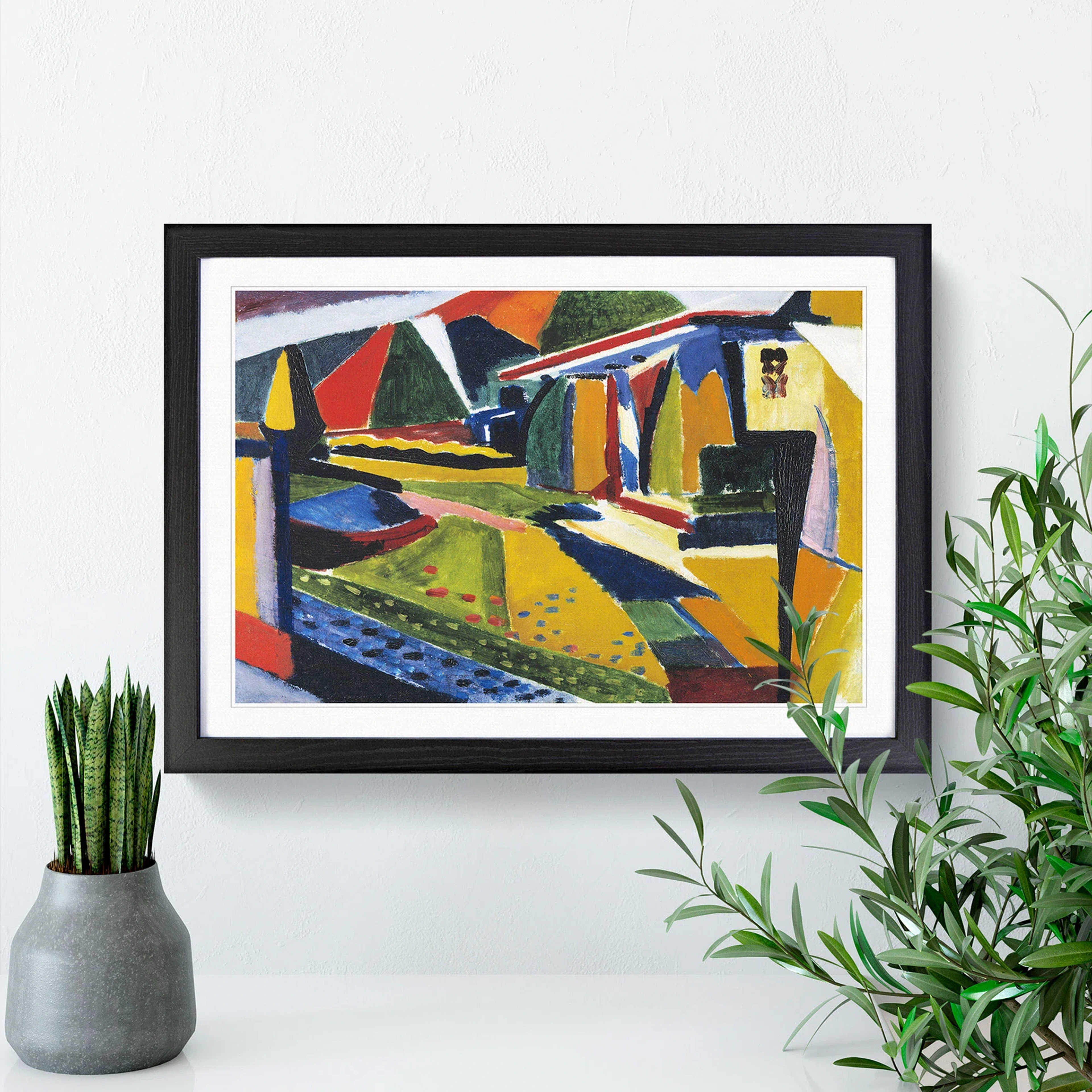
Biophilic Design & Art: An Artist's Expanded Guide to Bringing Nature Indoors
Explore biophilic design and art with an artist's personal guide. Discover how nature-inspired art, materials, patterns, and light enhance well-being, reduce stress, and connect you to the natural world indoors. Includes practical tips, artist examples, and a look at the science.
Biophilic Design & Art: My Expanded Journey to Weaving Nature Indoors
It feels like we spend half our lives bathed in the blue glow of screens, doesn't it? Tucked away in boxes – our homes, offices, even cars. I remember this one specific Tuesday afternoon, stuck revising a grant proposal, where the most exciting thing happening was a pigeon strutting on the windowsill outside. I found myself utterly captivated, not by the pigeon itself (sorry, pigeon), but by the sheer relief of looking at something alive and unscripted. It's this deep, almost cellular pull towards nature that we all seem to carry. And lately, I've been obsessed with how to weave that feeling into our indoor lives, especially through the language I know best: art. Art, I've come to realize, is uniquely suited to translate the experience and essence of nature, not just its appearance. This led me down the fascinating rabbit hole of biophilic design, and specifically, how art can be our bridge back to the natural world, even when the closest we get to a forest is a screen saver or, let's be honest, a slightly dusty houseplant I'm desperately trying to keep alive.
Biophilic Design: Sounds Fancy, Feels Natural (Let's Decode It)
Okay, let's be honest, 'biophilic design' sounds a bit like something you'd need a PhD to understand. But strip away the jargon, and it’s beautifully simple, almost intuitive. The term 'biophilia', popularized by the brilliant biologist E.O. Wilson in his 1984 book of the same name, literally means 'love of life or living systems'. He, along with others like Stephen R. Kellert who helped shape the practical framework (often cited as the 14 patterns of biophilic design), proposed that we humans have an innate, genetically determined tendency to seek connections with nature and other forms of life. Makes perfect sense, right? We evolved over millennia outdoors, surrounded by plants, animals, water, the rhythm of changing light. It’s baked into our DNA.
Biophilic design, then, is simply the practice of consciously incorporating nature and natural elements into our built environments – basically, anywhere we live, work, or spend significant time indoors. It’s more than just plopping a slightly sad-looking succulent on your desk (though hey, it's a start! We've all been there, right?). It’s about creating spaces that genuinely echo the patterns, forms, and sensations of the natural world. Experts have even mapped out specific ways nature shows up in beneficial ways – things like:
- Visual Connection with Nature: Seeing living systems, natural processes, or natural landscapes (e.g., a view of trees, a living wall, or even a high-quality nature photograph).
- Non-Visual Connection with Nature: Experiencing nature through other senses like sound (birds chirping), smell (fresh rain), or touch (rough bark), even if not directly seen.
- Non-Rhythmic Sensory Stimuli: Random, transient natural movements or sounds that capture attention (e.g., rustling leaves, flickering firelight, animal movements).
- Thermal & Airflow Variability: Subtle changes in air temperature, humidity, and airflow that mimic natural environments (e.g., a gentle breeze from a window).
- Presence of Water: Seeing, hearing, or touching water (e.g., a fountain, an aquarium, or art depicting water).
- Dynamic & Diffuse Light: Varying intensities and qualities of light and shadow that change over time, mimicking natural light (e.g., sunlight filtering through leaves).
- Prospect: Having an unimpeded view over a distance, offering a sense of safety and opportunity (like looking out over a landscape).
- Refuge: Feeling safe and protected from the environment, providing security and retreat (like a cozy nook).
- Mystery: The promise of more information through partially obscured views or intriguing pathways, encouraging exploration (e.g., a winding path disappearing into trees).
- Risk/Peril: Experiencing thrilling situations with a sense of safety (e.g., standing at the edge of a cliff with a railing, or viewing powerful natural phenomena through art).
- Biomorphic Forms & Patterns: Using shapes, patterns, and textures found in nature (like the curve of a leaf, the branching of a tree, or the swirl of a shell), which are inherently appealing and engaging to our brains.
- Complexity & Order: Mimicking nature's intricate yet organized structures (think the veins of a leaf or the structure of a crystal), which can be visually stimulating without being overwhelming.
- Connection to Natural Systems: Fostering an awareness of natural processes like seasonal changes, weather patterns, or the cycles of growth and decay. This can be achieved through views, natural materials that age, or even art that depicts these cycles.
The goal? To tap into that innate connection to boost our well-being, reduce stress, and maybe even uncork a little creativity. Think about the visceral difference between walking through a sun-dappled forest and navigating a sterile office corridor under fluorescent lights. That sense of calm, the gentle stimulation, the feeling of belonging – that's the magic biophilic design aims to capture. It acknowledges that we're not just cogs in a machine; we're biological beings who thrive when connected to the living world. And while consciously designing with nature might feel like a modern trend, the impulse isn't new. Think of the serene tranquility of traditional Japanese interior gardens or the open-air courtyards bringing light and life into ancient Roman villas – we've been trying to bring the outside in for centuries.
Beyond residential spaces, biophilic design principles are increasingly applied in offices (leading to increased productivity and reduced absenteeism), healthcare settings (promoting faster healing and reduced stress), and schools (improving learning outcomes and focus). The benefits are tangible and widespread.
So, if we're aiming for these nature-infused spaces, how does art, my own language, fit into the picture? How can paint, canvas, or sculpture act as a conduit for this deep-seated need for nature?
Art as Your Nature Connection: More Than Just Pretty Pictures
Where does art fit into this? Everywhere, I'd argue! Art is this incredible tool we have to translate the experience of nature, evoke emotions, and bring abstract concepts roaring to life. When it comes to biophilic design, art can be a powerful conduit, bringing the essence of nature indoors in ways that go beyond a potted plant or a view (though those are great too!). It serves as a vital proxy or symbolic connection, especially in urban environments or spaces where direct access to nature is limited. Think of artists like Andy Goldsworthy, whose ephemeral sculptures are made from nature itself (stone, leaves, ice), highlighting the beauty of natural processes and materials. Or Georgia O'Keeffe, who zoomed in on the forms of flowers until they became abstract landscapes, revealing the monumental in the miniature. Other contemporary artists like Richard Long create land art by walking or arranging natural materials, directly interacting with the landscape. Maya Lin's sculptures and installations often reference geological forms and natural phenomena, bringing the scale and structure of the earth indoors. Art offers diverse pathways back to that natural connection.
Bringing the Outside In (Literally & Figuratively)
The most obvious way is through subject matter. Landscape paintings, botanical illustrations, photographs of sweeping vistas – they offer direct visual connections to nature. Gazing at a painting of a serene forest or a dynamic seascape can genuinely transport you, even if just for a moment. It's like installing a window to somewhere wild and green, even if you've never been there – it can still evoke a sense of wonder and longing for the natural world.
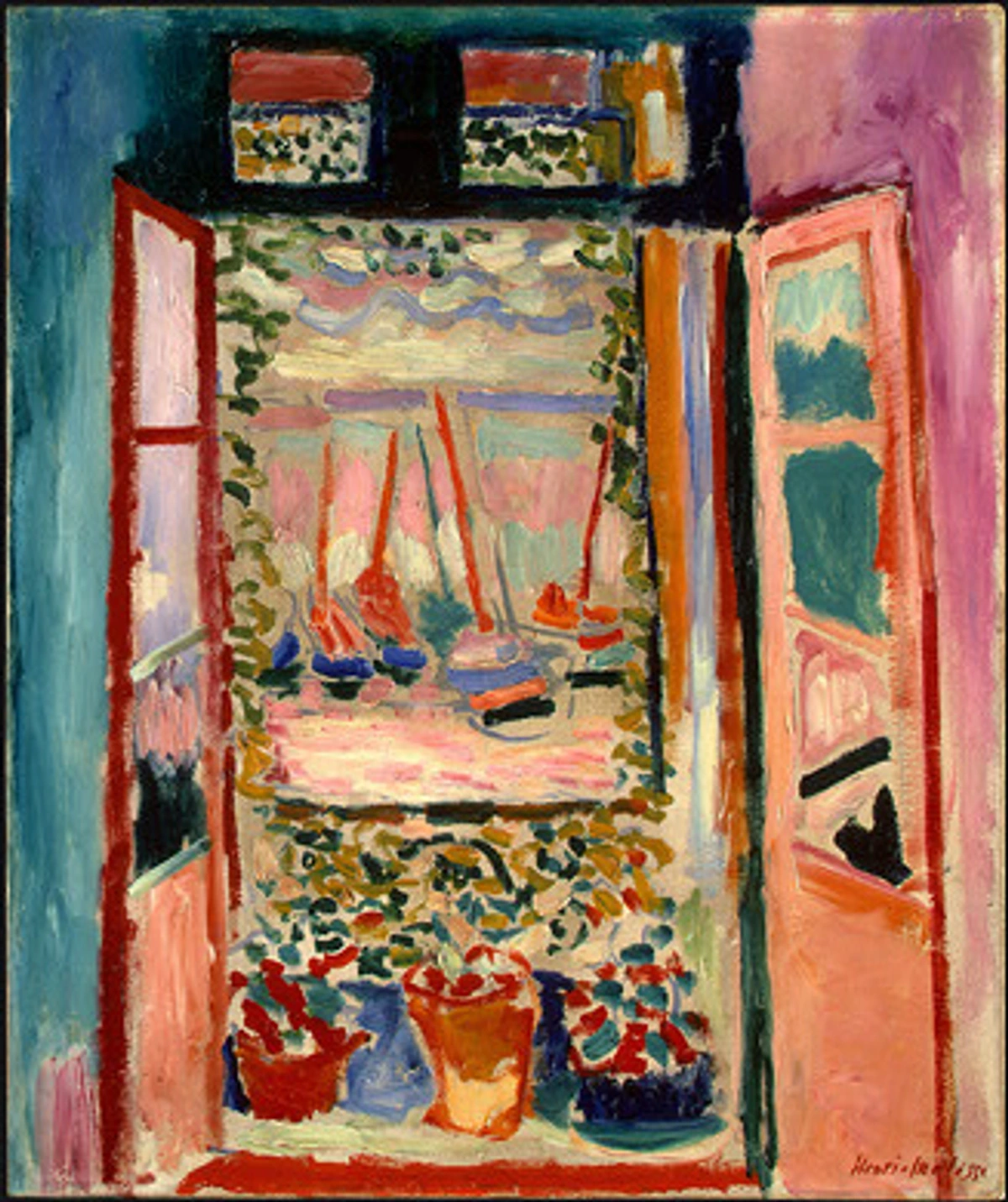
![]()
But it's not just about literal pictures. Abstract art can play this role powerfully, too. Think of pieces that use colors, forms, and textures inspired by nature – the blues and greens of water and foliage, the rough texture of bark, the sweeping lines of wind or water currents. My own work often leans into this; sometimes it's less about painting what I saw on a walk and more about translating the feeling of the wind or the pattern of light through the leaves. It’s about capturing the essence, not just the appearance. For example, I have a piece that uses layered textures and deep blues that, to me, capture the chaotic energy and quiet depth of a storm rolling in over the ocean – it's not a picture of a storm, but it feels like one. You can explore some pieces that attempt this in my shop.
Natural Materials & Textures
Biophilic design isn't just visual; it's profoundly tactile. Art created from natural materials brings an inherent, grounding connection. For me, working with wood isn't just about the final form; it's feeling the grain under my fingers, smelling the sawdust, remembering the tree it came from. Or the cool, smooth weight of a river stone, or the rough, yielding texture of natural fibers like hemp or wool. There's a specific piece I made recently, a sculpture from reclaimed oak, where I deliberately left some of the rough bark on one side. Touching it immediately brings back the feeling of a forest walk. Think wooden sculptures that retain the texture of the bark, artworks incorporating stone or natural fibers, ceramics using natural clays and glazes, or even pigments derived from earth and plants. There's an undeniable honesty and grounding quality to these materials, a direct link to their origins. Plus, the inherent imperfection and uniqueness of natural materials offer a beautiful contrast to manufactured uniformity, mirroring the beauty of nature's own irregularities.
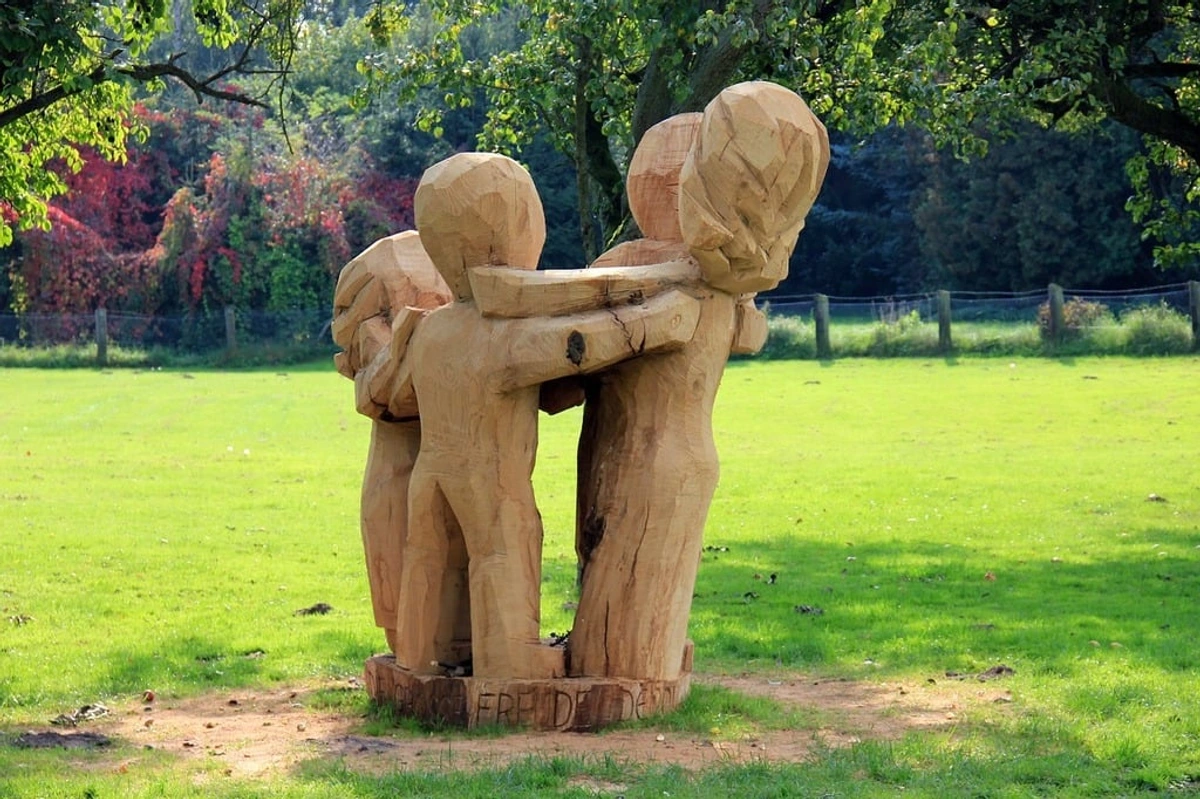
Using eco-friendly art materials often aligns naturally with this aspect of biophilic art, connecting the process back to the planet.
Mimicking Nature's Patterns (Fractals, Ferns, and Fun Stuff)
Nature is a master of patterns – the intricate branching of trees mirroring river deltas, the mesmerizing spirals of shells and galaxies, the delicate veins of a leaf, the jagged, repeating complexity of coastlines or mountain ranges (hello, fractals!). Think of fractals like a mini-version of the whole, repeating at different scales – like seeing the same branching structure in a tree's trunk, its main branches, and even the smallest twigs. Even things like snowflakes, fern fronds, or the florets of a Romanesco broccoli show these repeating, self-similar patterns at different scales. Art that incorporates these natural geometries, whether explicitly or abstractly, resonates with our innate, almost subconscious understanding of these fundamental forms. It's thought that these patterns are visually complex enough to be engaging but predictable enough to be calming, tapping into our brain's preference for processing natural scenes. Look around you right now – can you spot any natural patterns in the wood grain of your desk, the veins of a leaf on a plant, or even the way light falls?
Abstract art, in particular, excels here. A piece with swirling lines mimicking water currents, cellular structures echoing microscopic life, or layered patterns suggesting geological strata can evoke a sense of natural complexity and harmony without depicting a single recognizable object. I often find myself drawn to creating layered textures that hint at geological time or the chaotic beauty of tangled roots – it's the underlying structure, the pattern, that feels most potent.
![]()
Capturing Natural Light Patterns
Light is one of nature's most dynamic and mood-altering elements. Think of the way sunlight filters through leaves, creating dappled patterns on the forest floor, or the dramatic interplay of light and shadow across a mountain range at dawn or dusk. Art can capture these fleeting moments and patterns of light, bringing that sense of natural dynamism and atmosphere indoors. Paintings that masterfully depict chiaroscuro, photographs that play with sunbeams or shadows, or even abstract pieces that use color and texture to evoke the feeling of light filtering through water or foliage – these all tap into our innate response to natural light variations. It's not just about depicting a sunny scene; it's about translating the quality and movement of light itself. Think of the Impressionists like Monet, obsessed with capturing the fleeting effects of light, or landscape painters throughout history who sought to convey the atmosphere of a specific time of day or weather condition. Even contemporary photographers who specialize in capturing natural light phenomena contribute to this.
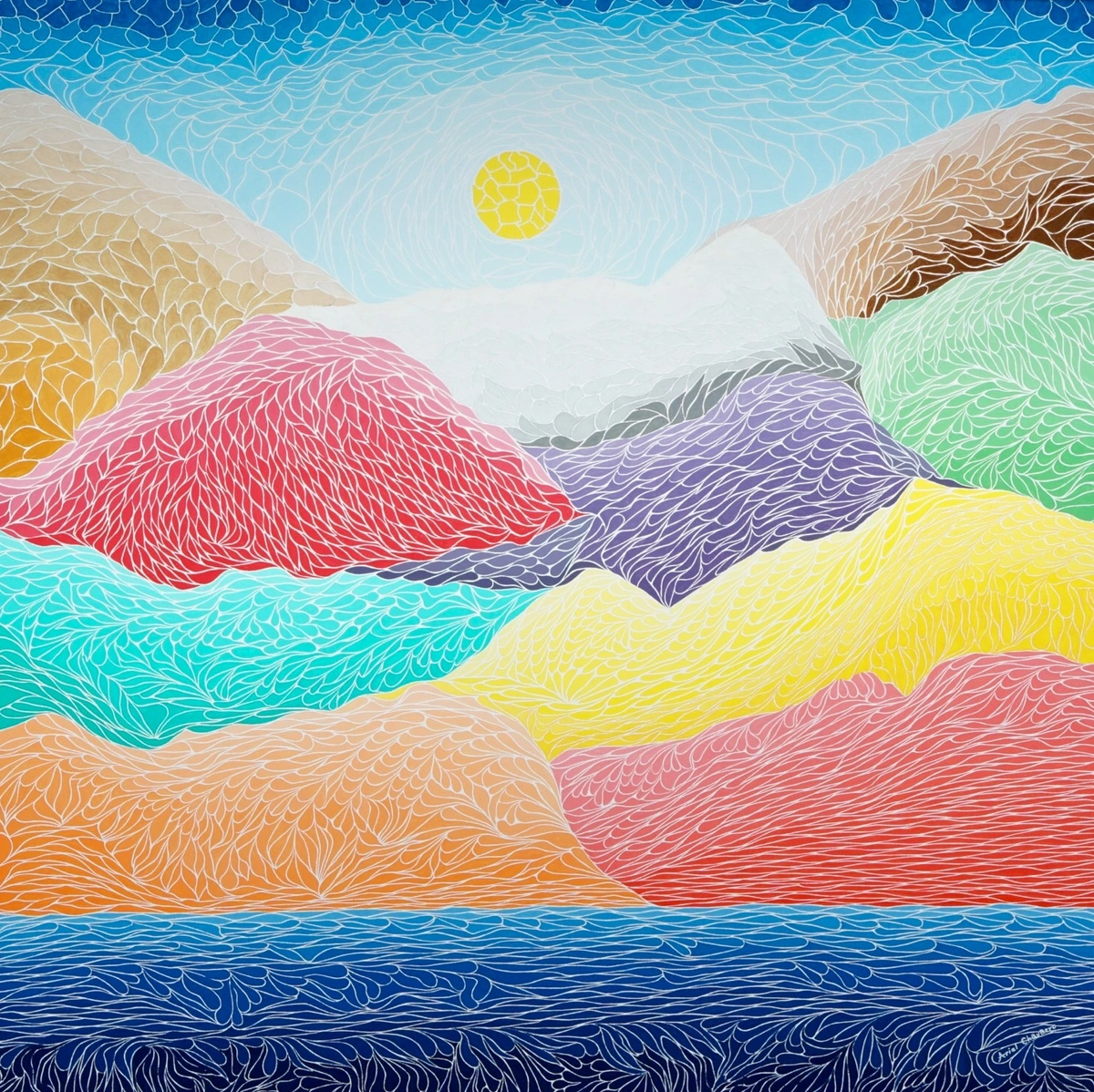
Evoking Other Senses & Connection to Place
Beyond the visual, art can sometimes evoke other senses tied to nature through association. While a painting can't literally smell like a forest, a piece with rich, earthy textures or colors might remind you of that scent. Similarly, abstract patterns or dynamic brushstrokes might evoke the feeling of wind or the sound of rushing water. Imagine a large abstract canvas with sweeping blues and whites – it might not depict the ocean, but the movement and color could trigger the sensory memory of standing by the sea, feeling the wind and hearing the waves. It's about triggering those sensory memories and associations.
Art can also foster a Connection to Place, one of Kellert's patterns. This involves art that relates to the specific natural environment where you live or where the art is displayed. This could be through depicting local flora or fauna, using materials sourced nearby, or reflecting the unique light, atmosphere, or geological features of a region. For example, a landscape painting of the specific mountains visible from your window, or a sculpture made from wood native to your area. This type of art can deepen your sense of belonging and connection to your immediate surroundings.
The Psychology Bit: How It Makes Us Feel
Ultimately, biophilic design and art work because they tap deep into our psychology. It’s not just woo-woo; there’s science here! Frameworks like Attention Restoration Theory (ART) suggest that exposure to nature (or its representations) can help restore our directed attention capacity, which gets fatigued by focused tasks. Stress Reduction Theory (SRT) proposes that viewing nature scenes triggers a positive emotional response and reduces physiological stress indicators like heart rate and blood pressure. Studies have consistently shown that viewing nature scenes (even representations like paintings or high-quality photographs) can lower stress hormones (like cortisol), improve mood, reduce mental fatigue, and even enhance cognitive function like focus and creativity. Some research using fMRI scans even shows changes in brain activity patterns when people view nature images compared to urban scenes, activating areas associated with calm and positive emotions.
Art that evokes nature, therefore, can create a genuinely restorative atmosphere. It can make a space feel calmer, more welcoming, safer, and more conducive to whatever you need to do there – whether that's deep focus, relaxation, or healing. I remember one particularly stressful week in the studio; just taking a few minutes to look at a small abstract piece I'd made, inspired by the quiet patterns of moss on a stone, genuinely helped ground me and shift my perspective. Think about creating a dedicated meditation space – biophilic art is practically a prerequisite! The colors used by artists play a huge role here, with greens and blues often linked to calm and restoration, while earthy tones provide a sense of grounding and stability.
Finding Your Biophilic Art Style (It's Personal, Remember?)
So, we know biophilic art can offer real psychological and physiological benefits. But how do you actually choose art that fosters this connection for you? Like any art choice, it's deeply personal. There's no single 'right' way, no biophilic checklist to tick off. But how do you find your slice of nature on canvas or in sculpture? Here are a few things I ponder, often while simultaneously battling the existential dread of keeping my latest houseplant alive (seriously, why is it so hard?):
- Reflect on Your Nature Connection: Take a moment to close your eyes and think of a place in nature where you feel most at peace, most energized, or most inspired. What colors, sounds, textures, or feelings come to mind? Is it the deep quiet of a forest, the vastness of the ocean, the ruggedness of mountains, or the intricate detail of a single flower? Let this personal connection guide your search.
- Direct Scene or Abstract Feeling? Do you crave a clear window onto a recognizable natural scene (a realistic landscape, a detailed botanical print)? Or are you drawn to something that hints at nature through color, form, and texture (an abstract piece that feels like water, or earth, or light)? Both are valid biophilic approaches. Trust your gut reaction – what makes you feel that connection?
- Nature's Color Palette: What natural environments soothe or energize you? Are you drawn to the deep, cool greens and blues of a forest or ocean (often associated with calm and restoration)? The warm, sandy tones of a beach or desert (providing grounding and stability)? The fiery oranges and purples of a sunset (evoking energy or drama)? Let nature's palettes guide your choices. Consider how the art's colors will interact with your existing room color.
- Scale and Impact: Does the art feel expansive like a vast vista, offering a sense of 'prospect'? Or is it intimate like a close-up detail, creating a personal connection or 'refuge'? A large, immersive piece can dominate a wall and transport you, while smaller pieces can create quiet moments of reflection. Consider how the scale of the artwork influences the feeling of the space.
- The Play of Light and Shadow: Does the artwork depict dappled light filtering through leaves, dramatic shadows across a landscape, or soft, diffused light? How does the light within the painting interact with the natural and artificial light in your room? This interplay can significantly impact the mood, mimicking the natural patterns of light and shadow that are inherently biophilic.
- Connection to Place: Does the art connect to the specific natural environment where you live or where the art will be displayed? This could be through depicting local flora or fauna, using materials sourced nearby, or reflecting the unique light and atmosphere of a region. This can foster a deeper sense of belonging and connection to your immediate surroundings.
- Weaving Art into Your Space: Think about where the art will live and how it interacts with the room. A large, immersive statement piece can transform an entire space, acting like a huge window. Smaller pieces can create intimate moments of connection, little pockets of nature to discover. Consider scale, placement, and how the artwork interacts with natural light and other elements. Check out guides on decorating your home or specifically decorating a wall for practical ideas. Sometimes, a minimalist display can amplify the impact of a single, powerful biophilic piece.
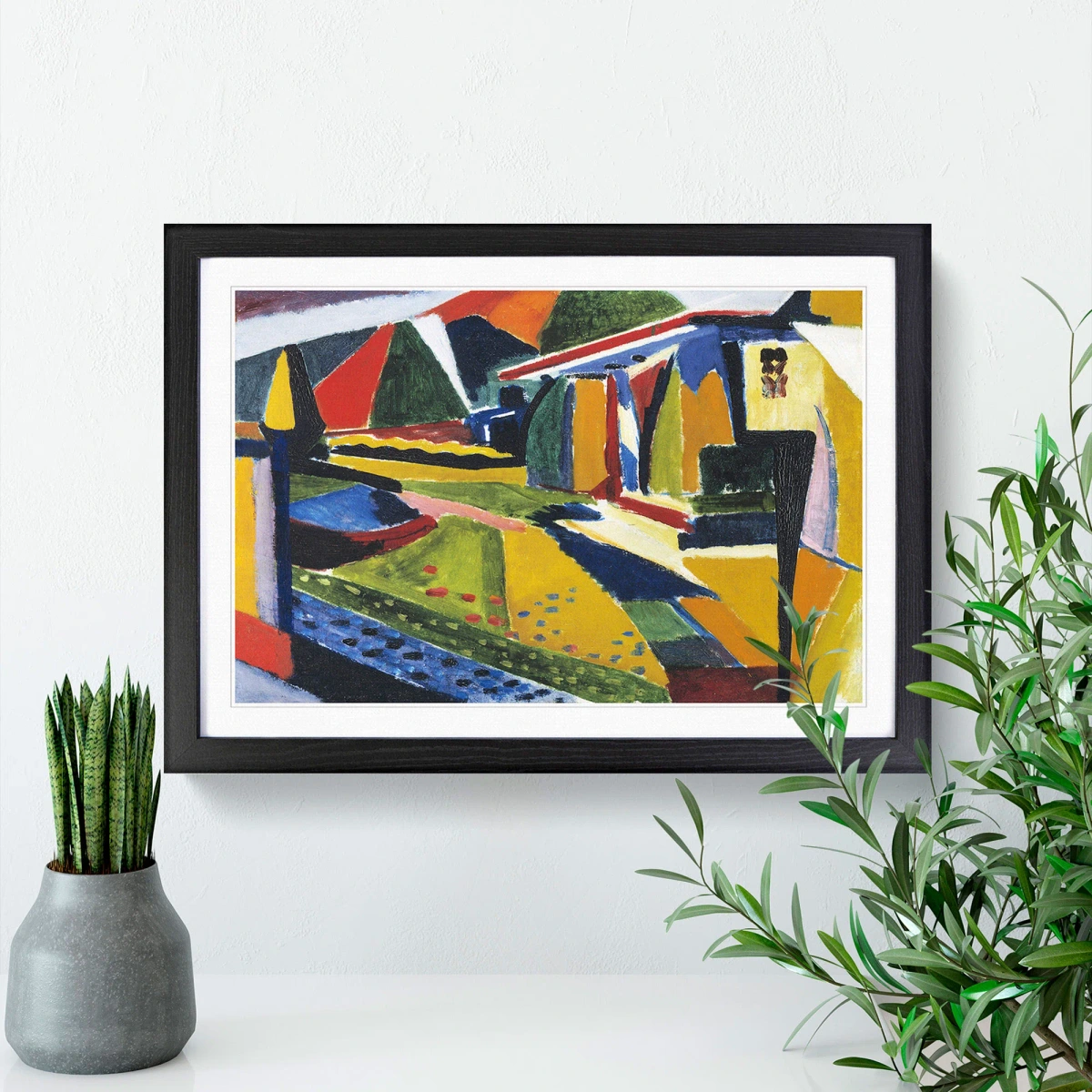
Of course, it's not always easy to turn your tiny apartment into a rainforest replica. Challenges like space constraints, lack of natural light, limited ventilation, budget, and the maintenance required for living elements (like plants or water features) are real. Art offers a flexible and often more accessible way to bring in that biophilic feeling without needing a green thumb (mine is questionable at best, honestly) or a huge renovation budget. It's a way to bring the essence of nature indoors, even if you can't bring the whole ecosystem.
Ultimately, the 'best' biophilic art is the piece that resonates deeply with you and makes your space feel more alive, more connected to the pulse of the natural world. You can browse various styles in my shop to see what sparks something for you.
My Own Tangle with Nature and Art
I have to admit, my own relationship with nature in my art hasn't always been a straight line. There were periods, especially early on (you can see some shifts on my timeline), where I was more focused on pure abstraction, on internal landscapes, wrestling with form and color in a way that felt detached from the outside world. But nature always, always creeps back in. Sometimes it’s a specific memory – the exact shade of green on moss after rain, the way light fractured through ice on a puddle, the chaotic pattern of waves collapsing on sand. Other times, it's just a feeling, a sudden need for a certain earthy texture or a watery blue that feels inherently 'natural'. For instance, I remember a walk after a heavy rainstorm; the air was thick with the smell of wet earth and decaying leaves, and the light filtering through the still-dripping trees created these intense, saturated greens and deep, muddy browns. That specific sensory experience didn't result in a literal landscape painting, but it directly influenced a series of abstract pieces where I explored layering dark, textured browns and vibrant, almost glowing greens, mimicking the damp, rich earth and the sudden burst of light on foliage. It was less about depicting the scene and more about capturing the feeling and sensory memory of it.
I find walks incredibly important for my process, even just around the block or near my studio and museum in Den Bosch. It's rarely about directly sketching what I see anymore. It's more about absorbing the atmosphere, the light, the sounds, the feeling of being in that place. That sensory input often marinates in my subconscious and translates later onto the canvas in unexpected ways. It’s less about replicating nature and more about having an ongoing conversation with it through paint and line. Finding art inspiration often means stepping away from the studio and back into the messy, unpredictable beauty of the world.
Biophilic Patterns & Artistic Translations: A Quick Look
Here's a brief overview of some key biophilic patterns and how art can serve as a powerful translation:
Biophilic Pattern | Description (Simplified) | How Art Can Translate It |
|---|---|---|
| Visual Connection | Seeing nature (views, plants) | Realistic landscapes, botanical art, nature photography, art depicting natural scenes. |
| Non-Visual Connection | Experiencing nature through other senses (sound, smell) | Art that evokes sensory memories through color, texture, or subject matter (e.g., earthy tones suggesting damp soil). |
| Presence of Water | Seeing, hearing, or touching water | Paintings, photographs, or abstract art depicting water bodies, rain, or fluid movement. Sculptures incorporating water. |
| Dynamic & Diffuse Light | Changing light/shadow patterns | Art that captures specific lighting effects (dappled light, dramatic shadows, sunsets), or uses light as a medium. |
| Prospect | Unimpeded view over distance (safety, opportunity) | Expansive landscape paintings, art depicting open vistas or horizons. |
| Refuge | Feeling safe and protected (security, retreat) | Art depicting cozy, enclosed spaces in nature (e.g., a forest clearing), or art that creates a sense of calm enclosure. |
| Mystery | Promise of more information (exploration) | Art with partially obscured elements, winding paths, or intriguing details that invite closer inspection. |
| Risk/Peril | Thrilling situations with perceived safety | Art depicting powerful natural forces (storms, cliffs, wild animals) viewed from a safe distance. |
| Biomorphic Forms | Shapes/patterns from nature (leaves, shells) | Art using organic, curvilinear forms, natural textures, or depicting natural objects. |
| Complexity & Order | Nature's intricate yet organized structures (veins, crystals) | Abstract art mimicking fractal patterns, geological layers, or cellular structures. |
| Connection to Systems | Awareness of natural processes (cycles, weather) | Art depicting seasonal changes, growth cycles, weather phenomena, or the passage of time in nature. |
Frequently Asked Questions (The Nitty-Gritty)
Q: Does biophilic art have to be actual nature photos or paintings?
A: Absolutely not! While realistic depictions are one powerful pathway, abstract art that uses natural colors, patterns, forms, or materials can be just as effective, sometimes even more so. It engages the imagination differently, tapping into those deeper, perhaps subconscious, connections to natural processes and feelings.
Q: Can abstract art really be biophilic?
A: Yes, definitely. Think of art mimicking fractal patterns found in nature (like branching or spirals), using palettes drawn from earth and sky, evoking the sensation of water or wind through line and texture, or employing natural materials. Abstract art often taps into the underlying structures, energies, and rhythms of the natural world.
Q: What about sculptures or other mediums?
A: Biophilic principles apply across all artistic mediums! Sculptures made of wood or stone bring tactile natural elements indoors. Textile art using natural fibers (like these rising stars) adds softness and texture. Installations incorporating natural light and shadow play, or even soundscapes evoking nature – they all contribute to a biophilic experience. Even functional art like ceramics or furniture made from natural materials can be biophilic.
Q: Is biophilic art expensive? How can I incorporate it on a budget?
A: It doesn't have to be! While original pieces by established artists can be an investment, you can find nature-inspired art across all price points. Look for prints, photography, work by emerging artists, or even high-quality digital displays. On a budget, consider DIY projects using natural materials (pressed leaves, stones, wood scraps), exploring digital art options, or supporting emerging local artists who might offer more accessible price points. The 'biophilic' quality comes from the connection you feel, not the price tag.
Q: How does the maintenance of biophilic art compare to plants or water features?
A: This is where art really shines for those of us without a green thumb! Unlike plants that need watering, light, and pruning, or water features that require cleaning and maintenance, most art simply needs occasional dusting and protection from direct sunlight (see my guide on protecting art). It offers the visual and psychological benefits of nature with significantly less upkeep.
Q: Can digital art or screens displaying nature be biophilic?
A: This is an interesting question! While a static digital image or video of nature can provide some visual connection (think a beautiful landscape screensaver), it often lacks the depth, texture, and permanence of physical art. Some argue that dynamic digital art inspired by natural processes (like generative art mimicking growth patterns) or large-scale digital installations that immerse viewers in simulated natural environments could have significant biophilic qualities. However, the constant light emission and potential for distraction from typical screens might counteract some benefits. It's probably less impactful than physical art or actual nature in most cases, but certainly better than a blank wall!
Q: Where can I find biophilic art?
A: Look everywhere with an open mind! Nature-inspired themes are incredibly common in art. Explore online galleries, visit local art galleries and studios, browse artist websites (like mine!), check out art fairs (tips for visiting), and even explore craft markets or platforms like Etsy. The key is to focus on what evokes that feeling of nature, calm, or connection for you personally.
Q: How can I integrate biophilic art if I already have lots of plants?
A: Great question! Art can complement living plants beautifully. Consider art that provides a different perspective on nature – perhaps abstract patterns that echo leaf veins, or colors that contrast with your foliage. Art can also bring in elements you can't have indoors, like vast landscapes or specific animal life. Use art to add layers of natural connection, texture, and color that living plants alone might not provide. Think of it as enhancing your indoor ecosystem.
Q: Does biophilic art always have to be calming? Can it evoke the wilder side of nature?
A: Not at all! While calm is a common goal, nature is also powerful, dynamic, and even chaotic. Art depicting storms, powerful animals, dramatic geological formations, or the raw energy of a forest fire can also be biophilic. It connects us to the full spectrum of the natural world's power and beauty. Different natural themes can serve different emotional needs – a serene landscape for relaxation, a dynamic abstract piece for energy or inspiration.
Q: Can biophilic art be used in specific rooms like bathrooms or offices?
A: Absolutely! Biophilic principles are highly beneficial in various spaces. In a bathroom, art depicting water or natural textures can enhance a sense of tranquility. In an office, nature-inspired art can reduce stress and improve focus. Consider the specific function and atmosphere you want to create in each room when choosing your biophilic art.
Conclusion: More Than Just Decor
Bringing biophilic design and art into your home or workspace isn't just about making the walls look nice (though, let's be honest, it definitely helps!). It's about acknowledging and nurturing that fundamental part of ourselves that craves connection with the living world. It's a small, daily act of rebellion against the sterile boxes we often inhabit, an invitation for nature to come back inside.
For me, exploring this intersection of art, design, and our innate love for nature has been a profound reminder of why I create in the first place – to connect, to translate experiences, and to find beauty and meaning in the world around us, both inside the studio and out. So, take a look around your own space. Could it use a little more life, a little more of the wild? Maybe, just maybe, a piece of art is the perfect place to start that conversation, transforming your space into an environment that actively supports your well-being. And remember, finding the art that speaks to your inner nature connection is an ongoing journey of discovery, much like exploring the natural world itself.




